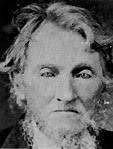 I got all religious on my hula sisters tonight. For my Fun Fact I preached about the Holy Bible, or, as it's called in Hawaiian, Ka Baibala Hemolele.
I got all religious on my hula sisters tonight. For my Fun Fact I preached about the Holy Bible, or, as it's called in Hawaiian, Ka Baibala Hemolele.I stumbled across an interesting item recently about the Hawaiian Bible Project and the work to create a new Hawaiian translation of the Bible.
But I already knew that the Bible was the first book to be published in the Hawaiian language and that many Hawaiians learned to read their own language by studying the Bible.
In fact, before the Congregationalist missionaries from New England came to Hawaii in 1820, the Hawaiian language was strictly oral. Rather than having written histories and stories, the people transmitted information through chants that were memorized by generation after generation.
The missionaries set up a printing press at the Mission Houses, which still exist, now as a museum, in Honolulu. Almost immediately after their arrival in 1820 the missionaries began transcribing the spoken language and publishing religious tracts in Hawaiian. But their main goal was to put the Bible in the hands of the native people. To that end, they formed a committee of missionaries and Hawaiians who translated the Old Testament from Hebrew and the New Testament from Greek. It took 19 years. The first printing of the Bible was in 1839.

The printing press didn't have characters for the diacritical marks now commonly used in Hawaiian, the 'okina and the kahakô. Subsequent editions, in 1868 and 1994, also did not have them. The American Bible Society, which had overseen those later editions, decided to stop printing the Baibala Hemolele after 1994 because at that time they deemed Hawaiian a dying language.
Of course, the situation changed rather rapidly after that, with widespread immersion schools creating a new generation of Hawaiian speakers. By 2002 the Hawaiian Bible Project was at work, not only creating a new translation complete with diacritical marks, but preparing to publish the new translation in digital form, complete with audio tracks. By the end of 2009 the full translation should be available at www.baibala.org. The previous editions of the Hawaiian Bible are already online at that site.
When I visited the Mission Houses in Honolulu last February, I saw the printing press, but I was told that it was not the original press. The original press had been replaced after about 20 years. A couple of months later I was researching an article about Forest Grove, Oregon, and I visited the museum in Old College Hall, built in 1851, at Pacific University. Pacific was founded by Congregationalist missionaries, the same denomination as those who went to spread Christianity in Hawaii.
A docent took me through the small museum, pointing out all sorts of odd artifacts that related to the history of the university. But in a dusty corner, there was an old printing press. That, he said, had originally been in Honolulu. But when the missionaries there got a new printing press, they sent the old one to what was then Tualatin Academy in Forest Grove.
It's rather amazing to realize that the printing press that completely altered the Hawaiian way of life by publishing a Hawaiian language Bible now sits in a little museum thousands of miles away in Oregon. The university, incidentally, has a large number of Hawaiian students. (See my post on their wonderful lû'au.) They might be surprised to learn that this forgotten treasure now sits under a layer of dust in their college museum.


